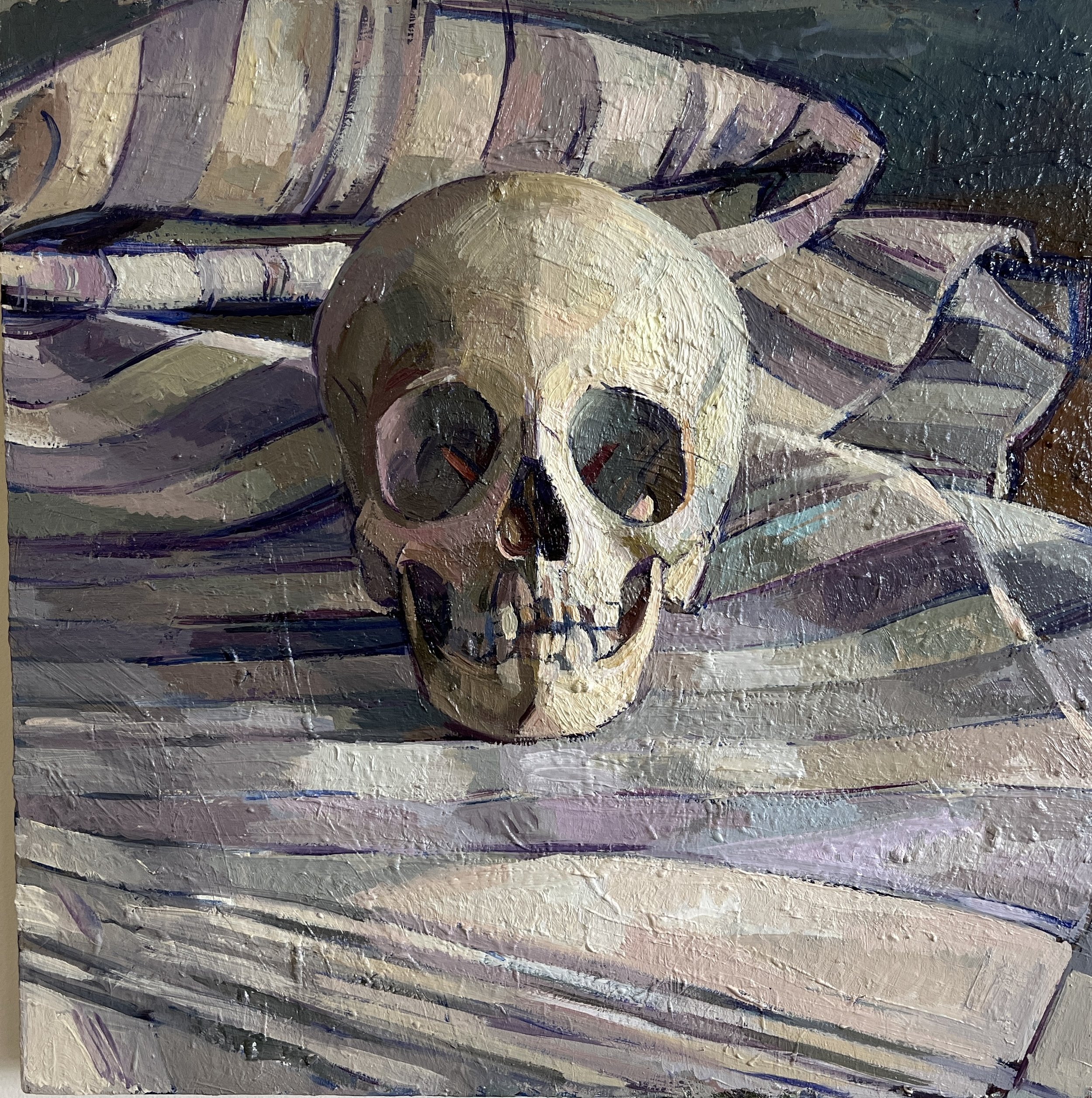Janet Niewald: Near the Woods
Janet Niewald: Near the Woods opens on July 9. A translation of her own name in English, Nie / Wald, means “near the woods,” and in her correspondence with me, she joked that the show is a vanitas of sorts, perhaps. The show consists of landscapes, still lifes, self portraits, some that seem to focus on the structural components of the subject, while others are much more metaphorical. Regardless of what she’s painting, she is employing exciting contrasts, bold colors, deep shadows, strong structure, and patterns and repetition that unify the show.
In my brief communication with Janet, I asked her to share a few words about her work. Of her process, she said, “Although I often draw, I rarely do preparatory drawings for my paintings. Usually, I dive in, then delve and revise - until things evolve to a kind of stasis for that particular painting or until the surface becomes unworkable.” Drawing shines through in her work, nevertheless, as she uses bold lines to create compositional pathways through her work, such as in her many tree paintings and still lifes. Looking at her tree paintings, I’m reminded of the works of Mangold, Cezanne, and Mondrian. She balances the intellectualism of the subtle shifts in planes in Mangold’s treetops with the more visceral responsive drawing of the nexuses of criss-crossing branches of Mondrian’s trees, with mark making akin to Cézanne.
Then there are her landscapes that venture into still lifes. Various piles of things both natural and man-made make their way into Niewald’s paintings. Piles of compostable items–items that are of the earth and will return to the earth, such as branches, needles, and other natural debris are beautifully painted in Compost Heap I. The painting is responsive and lively with marks that are at times drawn, scribbled, and carefully placed.
And then there is Loops (Fencing Scrap)--another kind of still life in the open air: the discarded stuff of outdoor human habitat. A composition consisting of a pile of fencing wire, discarded pieces of wood, and a terra cotta planter, which on the one hand, bridges the divide between landscape and still life, and on the other hand, reveals the invasion of human stuff into the natural landscape.
While she may dive right into her painting, her still lifes and self portraits feel like they are very intentionally constructed. Shells and Ammonites I has a compositional structure almost like the nautilus shells within the painting, spiraling in from the outer pointy edges of the large shell in the back, following the shells and the stripes of the blanket down and around and curving back upward to a green glass at the center, laying on its side, complementing the rosy hues of the blanket and conch shell.
Included in the many still lifes in the show are a series of skull paintings, which appear to be a meditation on grays, on natural light, and perhaps on mortality. Some paintings are a small meeting of skulls, seemingly looking to each other for support, while Skull with Striped Rug is a singular portrait, a confrontation with the viewer, reminding us of the inevitable.
In her artist statement Janet writes, “Lately, mortality has dogged my peripheral vision and my recent work reflects that. An ongoing series of self-portraits contemplate our crisis with/in nature (a crisis with/in ourselves), and is influenced by the work of environmental writers and activist-scientists like Elizabeth Kolbert, Suzanne Simard, and Sylvia Earle.” Self Portrait ExEnNe is an example of this. She shared, “The title derives from three abbreviations from the “Red List” of species–Ex is Extinct (Dodo); En is Endangered (Tiger); and Ne, rarely used, means Not Evaluated (Human). These three abbreviations are sort of buried within each layer of the compositional stack. I am often struck by how we humans, however afraid we may be of tigers and sharks and bears, are clearly the ultimate predator of this era.” In this picture, she paints the dodo bird and its skeleton, a tiger, and her self portrait, stacked in front of each other. With the dodo, she echos the motif of her other figurative work, specifically her series of paintings of “subject and herself” (a woman clothed and nude). With all of this behind her within the picture plane, the self portrait takes on a new meaning: it is not just the face of an artist in deep observation–this is the artist’s enunciation of the earth in crisis.
This tremendous show will be on view from July 9 through July 27th, with an opening on July 11th.
-Eileen Mooney.







